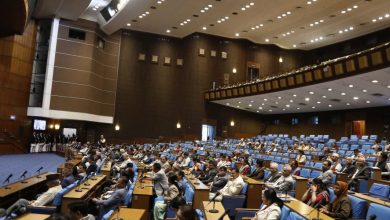Lumpy skin outbreak causing havoc across Nepal

July 20, Kathmandu: A highly contagious lumpy skin infection has led to a devastating loss of cattle across the country, including the Rasuwa district, sparking fear and concern among farmers. The outbreak has already resulted in the death of 158 cattle in Rasuwa.
The infectious disease has rapidly spread across all five rural municipalities in the district, with Gosainkunda rural municipality being the hardest hit. In this area alone, 22 yaks and 41 cows of the local species have succumbed to the lumpy skin contagion in six wards, as confirmed by Suresh Badal, Livestock Technical Chief at Syafrubesi in the rural municipality.
Authorities have been mobilizing Livestock Technician teams to combat the outbreak and are making efforts to contain the spread of the viral disease. So far, approximately 800 cattle have been infected with lumpy skin disease in Gosainkunda.
The cause of the outbreak has been attributed to the common practice of allowing cattle to graze freely in open highland areas. As a result, the disease has also affected farmers in Naukunda, Kalika, and Uttargaya rural municipalities in the district.
Apart from Gosainkunda, as many as 1,500 infected cattle are currently receiving treatment in other local level areas of the district, excluding Chhodingmo, according to information from technicians in the concerned rural municipalities.
In response to the severity of the situation, a technical team has been deployed in the southern belt of Rasuwa to focus on disease control. Unfortunately, the infection has predominantly affected oxen used for ploughing, directly impacting farmers in their paddy plantations.
The lumpy skin outbreak has extended beyond Rasuwa, reaching the neighbouring district of Nuwakot. According to Dr. Bablu Tharu, Information Officer at Veterinary Hospital and Livestock Expert Centre in Nuwakot, the infection has affected a total of 13,000 cows, oxen, and yaks in both Nuwakot and Rasuwa as of July 16.
Distressingly, the infection has claimed the lives of yaks in the highlands of Rasuwa, further exacerbating the gravity of the situation. Dr. Tharu reported that medical supplies have been deployed to the affected areas to provide immediate relief.
As livestock losses continue to mount, with 411 cattle having died from the contagious disease in Nuwakot, authorities are diligently working to address the outbreak and mitigate its impact on cattle and farmers alike.





Comments